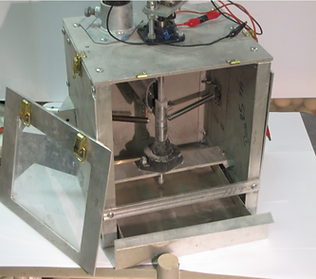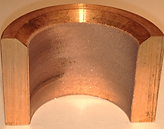
Returning to the moon, is not easy. The harsh lunar environment, solar radiation, the large amplitude of the temperature fluctuation and the negligible atmosphere and therefore low atmospheric pressure will challenge future manned and unmanned missions.
One of the most pervasive limits to lunar surface exploration is the presence of lunar dust, which is electrostatically charged and adheres to everything with which it comes into contact. Lunar dust is very fine and also highly abrasive.
This research is conducted in the context of an NSERC CRD grant between Neptec Design Group, the Canadian Space Agency, and McGill University to study regolith induced wear and lunar dust mitigation.

Lunar dust mitigation with electrostatic & dielectrophoretivc forces

Before activation

Before activation

After activation

After activation
Lunar dust induced wear and abrasion


Half bearing abrasion test results against lunr dust simulant (Chenoby). Top: Aluminum, bottom: Copper

Moon dust as a solid lubricant
Evaluated the idea of sorting and transporting regolith regolith into the journal bearing and employing it as a solid lubricant.